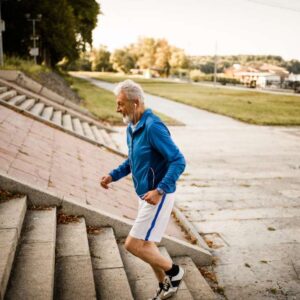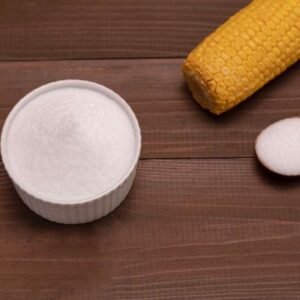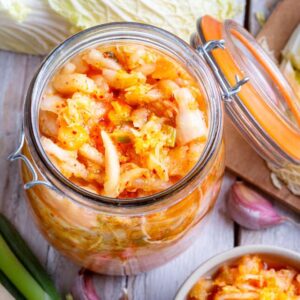
7 Natural Ways to Tackle Pain Without Pills
On Tuesday, we explored a promising new frontier in pain relief: terpenes, natural compounds found in cannabis (and other plants) that may ease pain without the risks of opioids.
That research is still developing. But what if you’re looking for help right now?
Good news: You don’t have to wait for a pharmaceutical breakthrough to start feeling better.
There are safe, effective ways to ease chronic pain today—no prescriptions or psychoactive effects required.
Here are seven time-tested, drug-free approaches to add to your pain relief toolkit…
- Acupuncture
Used for centuries in Traditional Chinese Medicine, acupuncture stimulates specific points on the body using tiny, hair-thin needles. This gentle process helps restore energy flow, release endorphins (your body’s natural painkillers), and reduce inflammation.
Modern studies show acupuncture may relieve pain from arthritis, fibromyalgia, migraines, and even post-surgical recovery.
- Chiropractic Care
A skilled chiropractor can help realign your spine, which may reduce pressure on nerves and improve joint function. Many people find chiropractic adjustments especially helpful for neck, back, and hip pain.
Just be sure to choose a licensed practitioner who has experience with your specific condition.
- Herbal Anti-Inflammatories
Mother Nature offers a powerful pharmacy of her own. Some of the best-studied natural pain relievers include:
- Turmeric (curcumin): Reduces inflammation and joint pain.
- Boswellia: Often used for arthritis and back pain.
- White willow bark: Known as “nature’s aspirin.”
These herbs work best when taken consistently, and many are available in capsule or tincture form.
- Topical Relief
Essential oils like peppermint, eucalyptus, or wintergreen—diluted in a carrier oil—can provide quick, localized relief when massaged into sore areas.
Arnica gel is another popular natural remedy, especially for muscle soreness and bruising.
And don’t forget capsaicin cream, derived from chili peppers, which works by blocking pain signals.
- Heat and Cold Therapy
Sometimes, the oldest remedies are still the best.
- Heat therapy helps relax tight muscles and increase circulation.
- Cold therapy reduces swelling and numbs sharp pain.
Try alternating hot and cold packs for 15–20 minutes each, especially after injury or flare-ups.
- Magnesium
This essential mineral supports muscle relaxation, nerve function, and healthy inflammation levels.
Low magnesium can contribute to tension, cramps, and restless legs.
You can boost intake through foods like spinach, avocados, almonds, and pumpkin seeds—or use magnesium oil or supplements as needed.
- Gentle Movement & Water Therapy
Regular movement is crucial for long-term pain relief. Low-impact options like:
- Swimming or water aerobics
- Stretching and yoga
- Targeted physical therapy exercises
…can strengthen muscles, improve flexibility, and reduce stiffness—without stressing sore joints.
Chronic pain doesn’t just affect your body—it weighs on your mind, drains your energy, and chips away at your quality of life.
And while pharmaceutical options have their place, they’re not your only option. As research into natural alternatives like cannabis terpenes continues to evolve, there’s a world of safe, effective remedies already available to help you feel better—starting today.
So, take the first step. Try something new. Because lasting relief is possible… and it doesn’t have to come from a pill bottle.
Written By Dr. Scott Olson, ND
Nearly 25 years ago, failed mainstream medical treatments left Dr. Olson in constant pain – and his health in ruins. And that’s when he did something REVOLUTIONARY. He began his career in medicine – and dedicated his life to uncovering the true, underlying causes of disease.
Through his innovative medical practices in Tennessee and Colorado, Dr. Olson has helped cure countless seniors from across America of arthritis… heart disease… diabetes… and even cancer. All without risky prescription drugs or painful surgeries.
View More Free Articles
A New Reason to Ditch Processed Junk
If you’ve ever walked the inside aisles of your local grocery store and thought, “This is all just junk,” your instincts were spot on. A new study published in the journal Thorax just added another red flag to the list of dangers linked to ultra-processed food—a 41 percent higher risk of lung cancer. That’s right....
When Being Winded on Stairs Is Serious (And When It Isn’t)
I had an athlete visit me recently because he experienced shortness of breath while climbing stairs. He is in great shape, so he was worried about what it might mean. “Doc,” he said, “I run five miles three times a week. Why am I huffing and puffing after two flights of stairs?” His concern is...
Study EXPOSES Hidden Danger Lurking in Your Car
We think of our homes and cars as safe havens. But according to a startling new study, they may be flooding your lungs with microscopic plastic particles—every single day. Researchers in France recently found that adults inhale an average of 68,000 microplastic particles daily from indoor air alone. To put that in perspective, that’s about...
Mailbag: Is Modern Food Making You Snore?
“What can cause snoring, and is there a way to correct this issue?” —Seeking Silence Hi Seeking, Snoring happens when the soft tissues in your throat relax and vibrate as air passes through during sleep. While several factors can cause snoring—from sleep position to nasal congestion—I want to share one trigger that might surprise you....
Simple Food Swap SLASHES Dementia Risk 28%
Let’s be honest… who would jump at the chance to cut their dementia risk by 28 percent. And no, you don’t need to run marathons, survive on broccoli, or learn to play the zither (whatever that is) to make it happen. All it takes is one easy swap—something that’s probably already in your refrigerator. Researchers...
This SMART Floss Exposes Hidden Health Danger
Scientists have created dental floss that doesn’t just clean between your teeth—it also tracks your stress while you’re flossing. Now, I know what you’re thinking… “Great—now even flossing is going to stress me out by telling me how stressed I am.” But this fascinating new tool from Tufts University could be a game-changer for understanding...
Is This "Safe" Sweetener Damaging Your Brain?
The headlines are alarming… “Popular Sugar Substitute Linked to Brain Cell Damage” and “Erythritol Could Damage Critical Brain Barrier” are just two of the dozens I’ve spotted recently. But before you toss every sugar-free product in your pantry, let’s take a closer look at what this study actually shows—and what it doesn’t. The latest research...
This Summer Threat Could SPIKE Your Blood Sugar
Picture this… It’s another scorching hot summer day. You crank up the air conditioning while watching the weather forecast, which predicts yet another “record-breaking” heat wave. It’s starting to feel like just another miserably uncomfortable summer. But what you might not realize is that—if you have diabetes—those rising temps could do far more damage to...
Move Over Yogurt—5 Foods That Pack MORE Probiotics
Let’s talk about your gut. The microbiome is the collection of trillions of bacteria and other tiny organisms that live in and on your body—especially in your gut—and help keep you healthy. I’ve written often about how vital it is to maintain a healthy microbiome. And you might have dutifully added yogurt to your shopping...
Is Your Heart Older Than YOU?
Maybe you feel young for your age. Good energy, decent sleep, eating your veggies. But what if I told you your heart might be a decade older than the rest of you? That’s exactly what researchers at Northwestern University found in a new study published in JAMA Cardiology. The average American woman’s heart is about...









